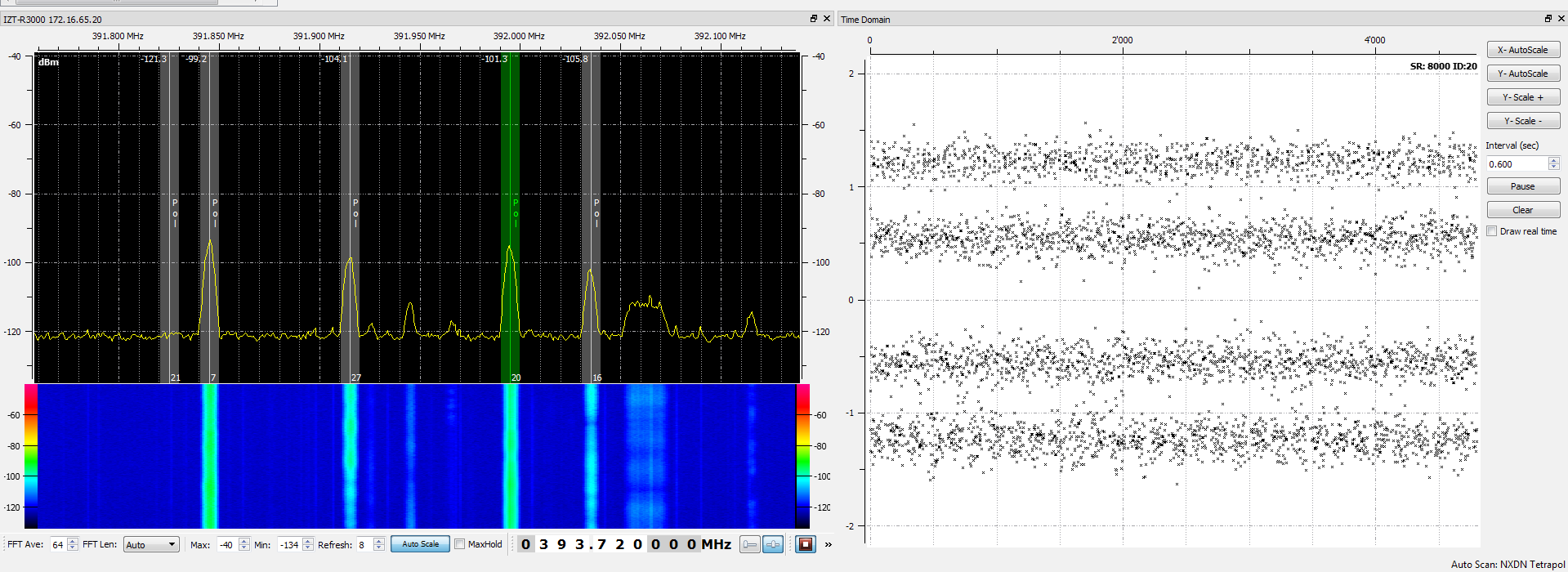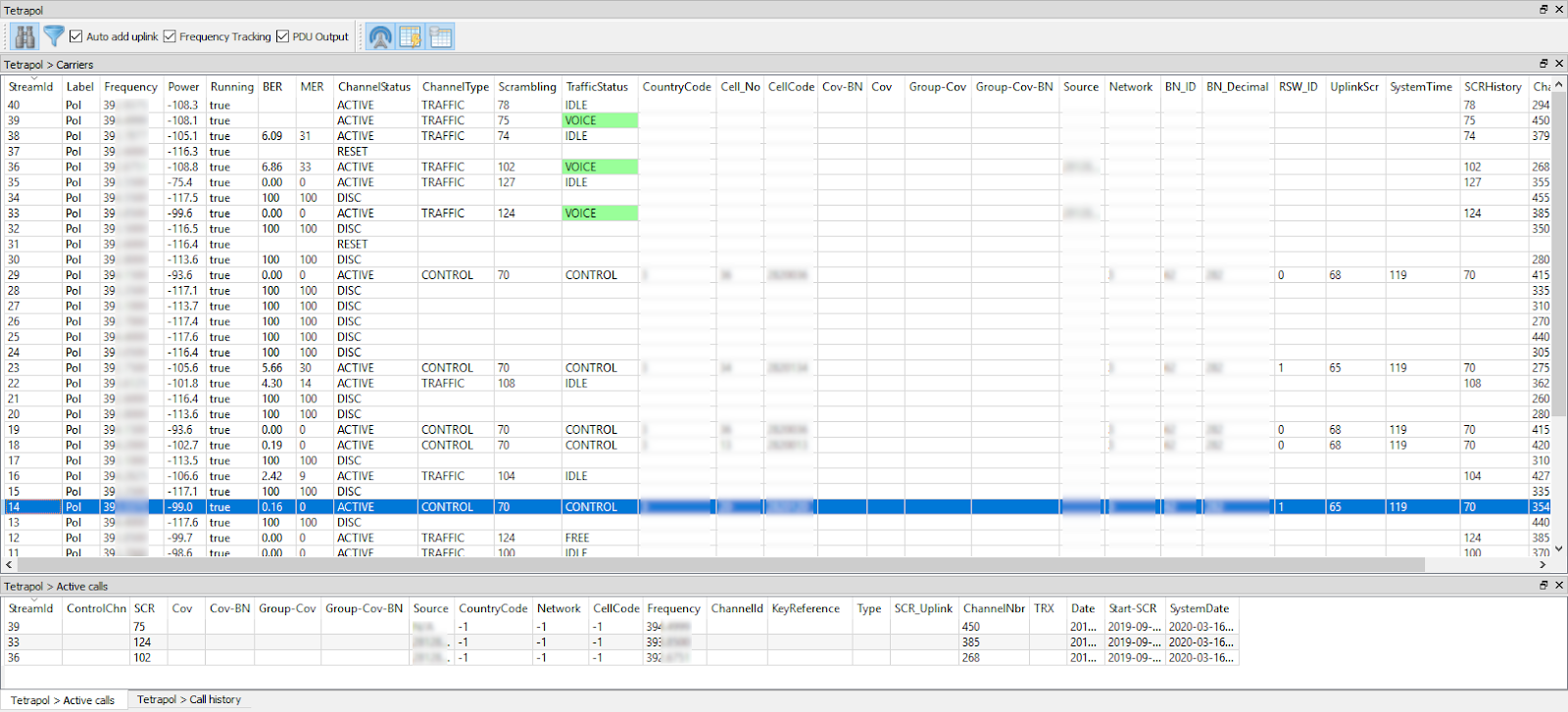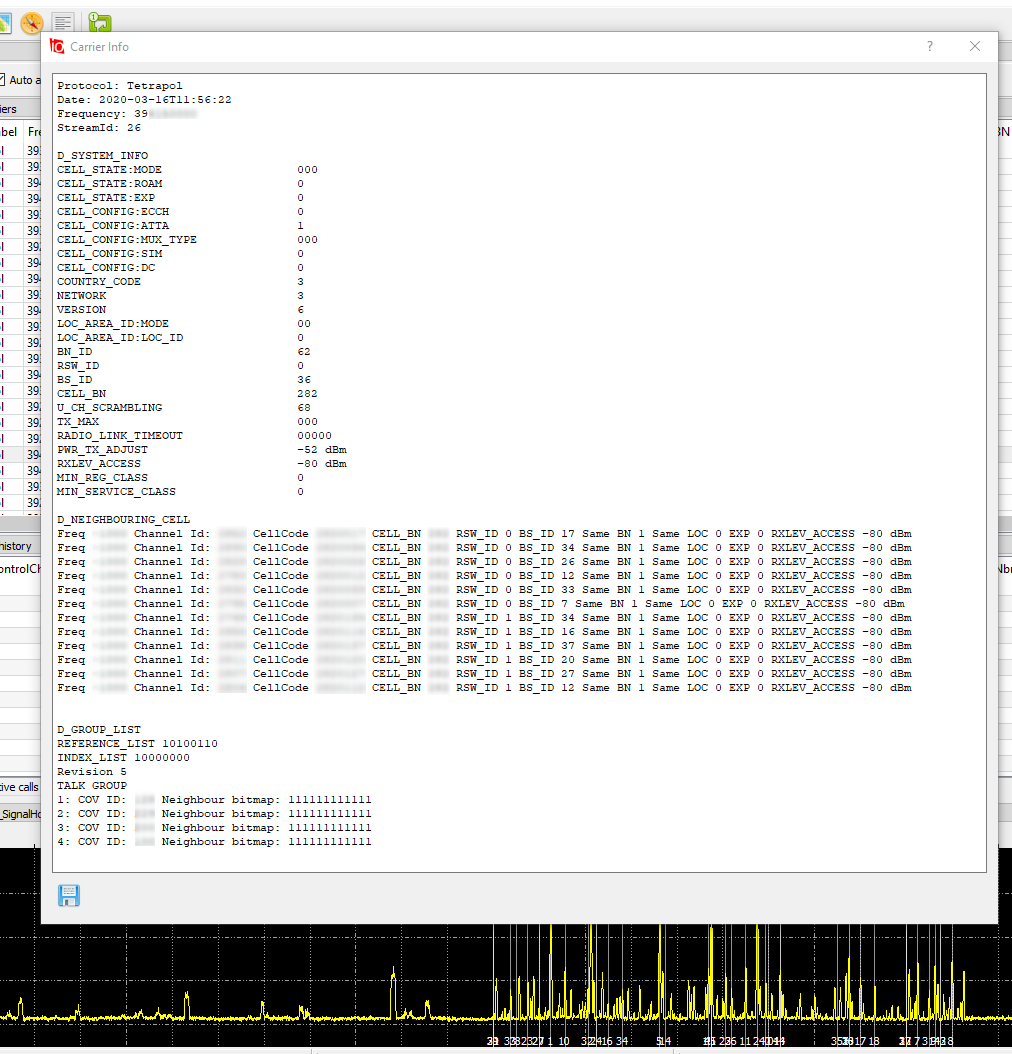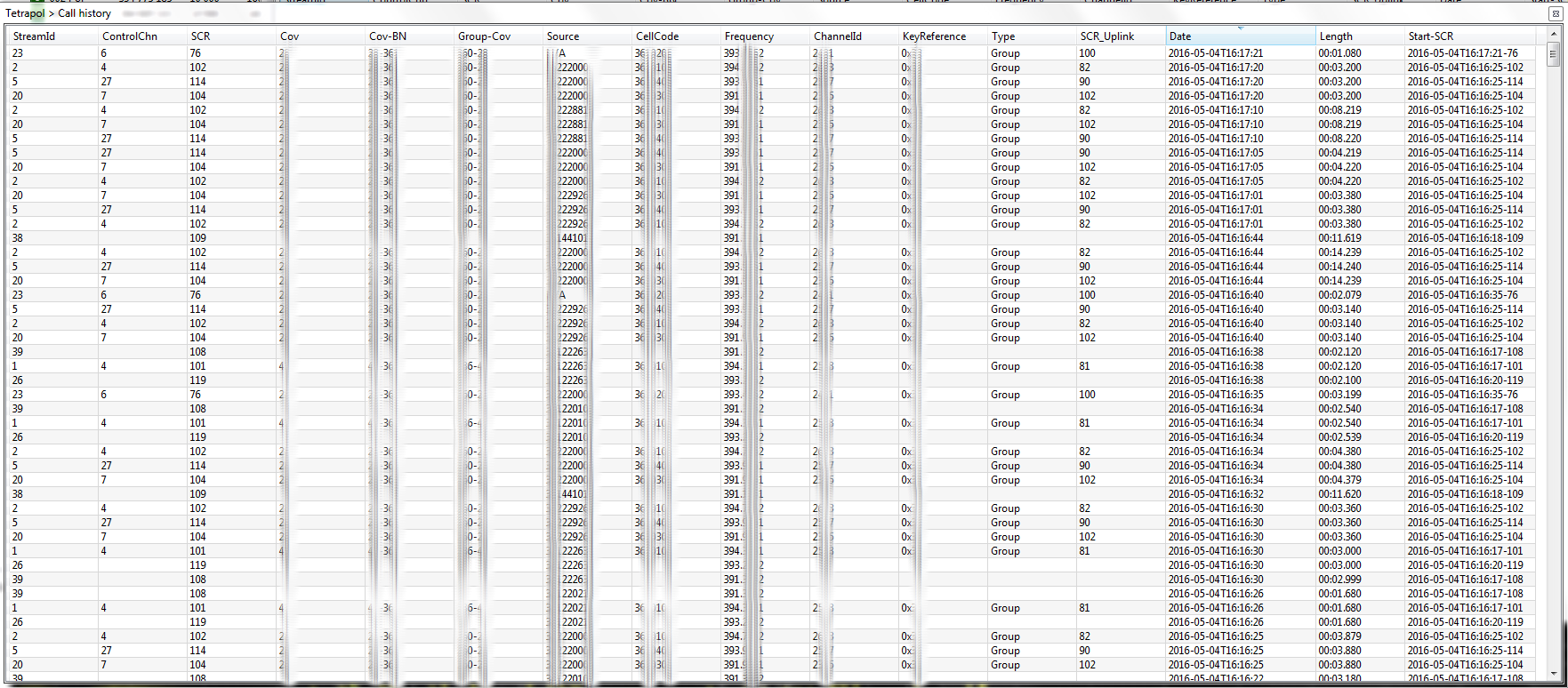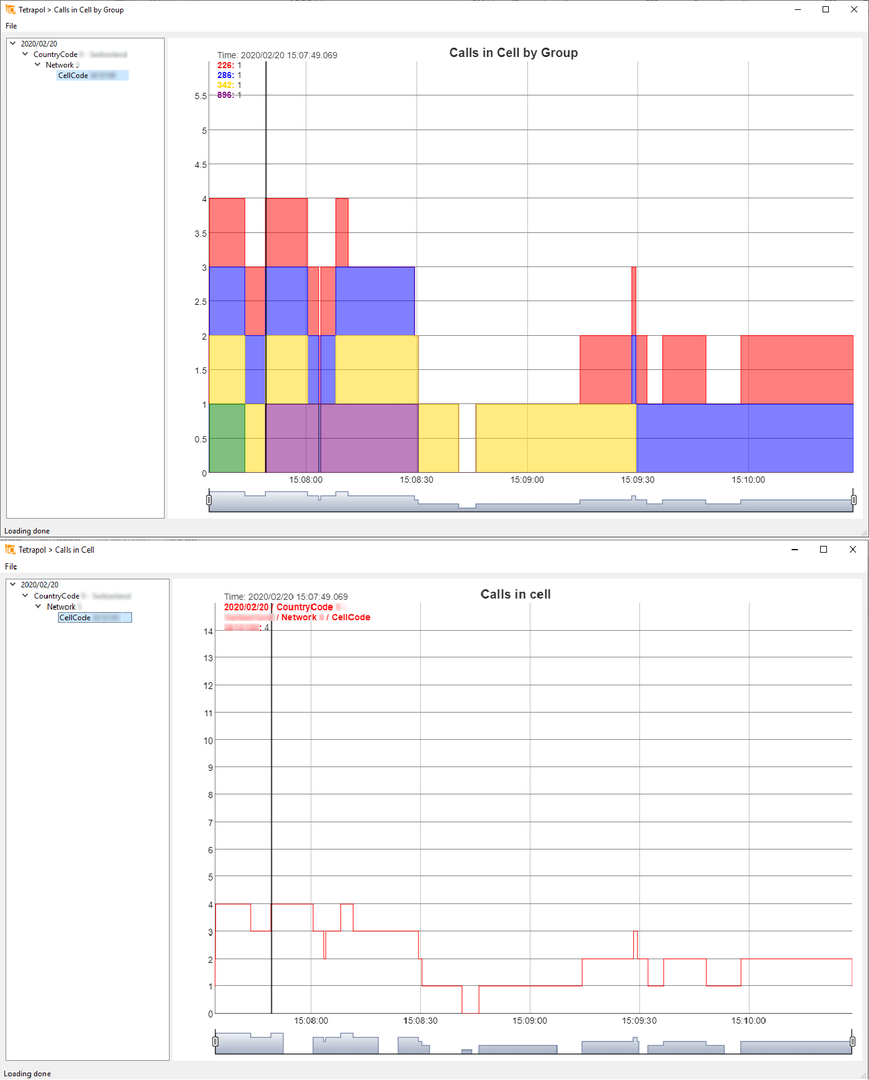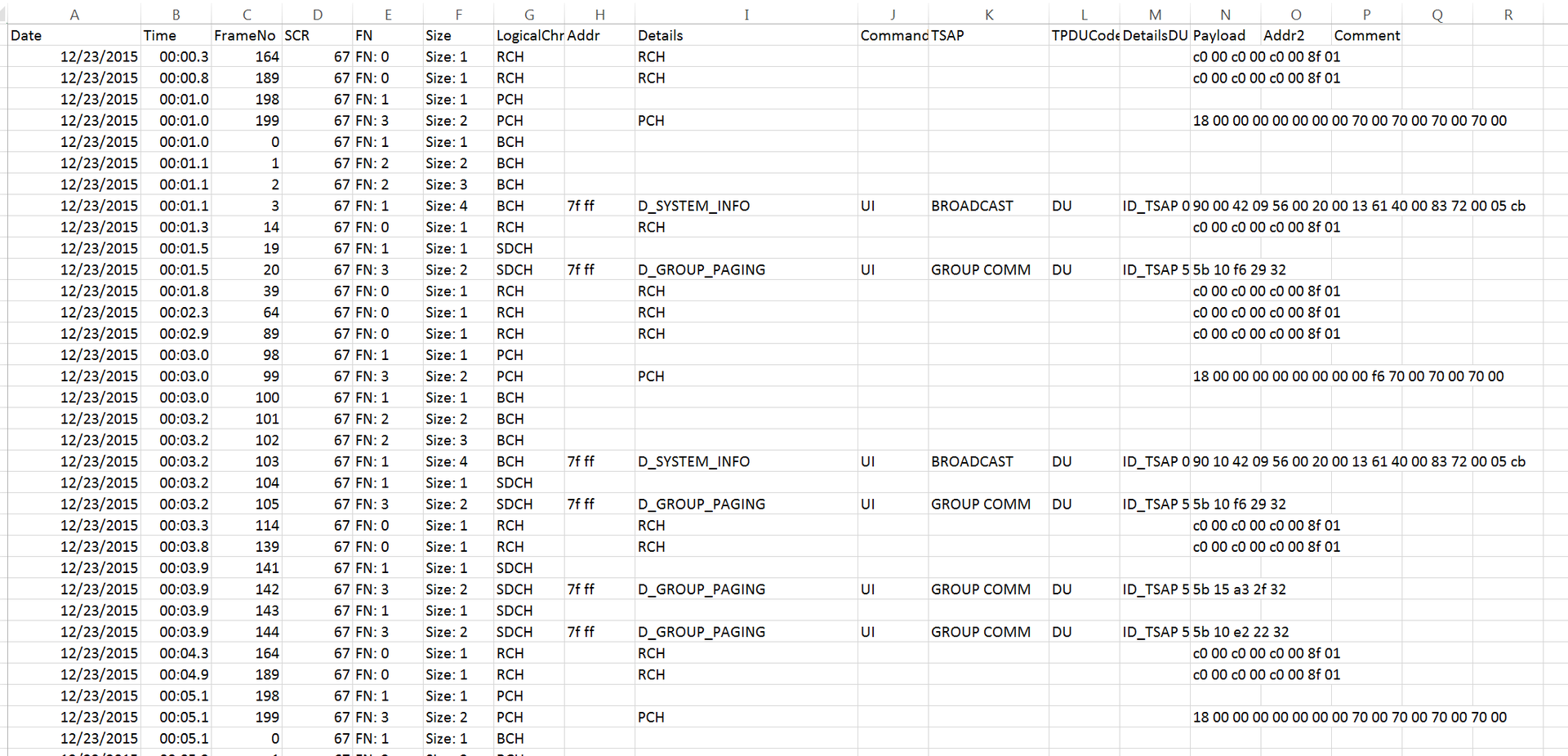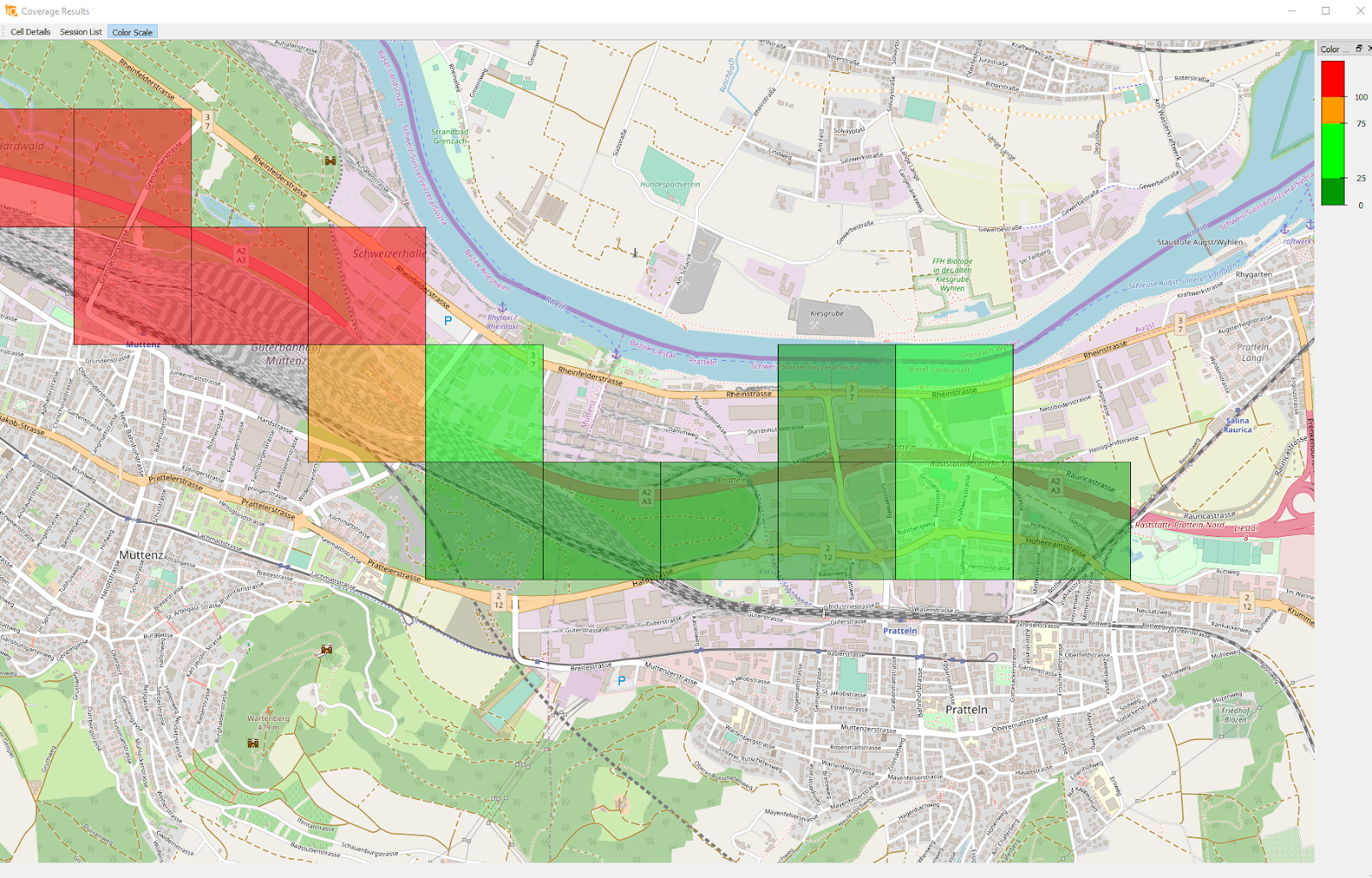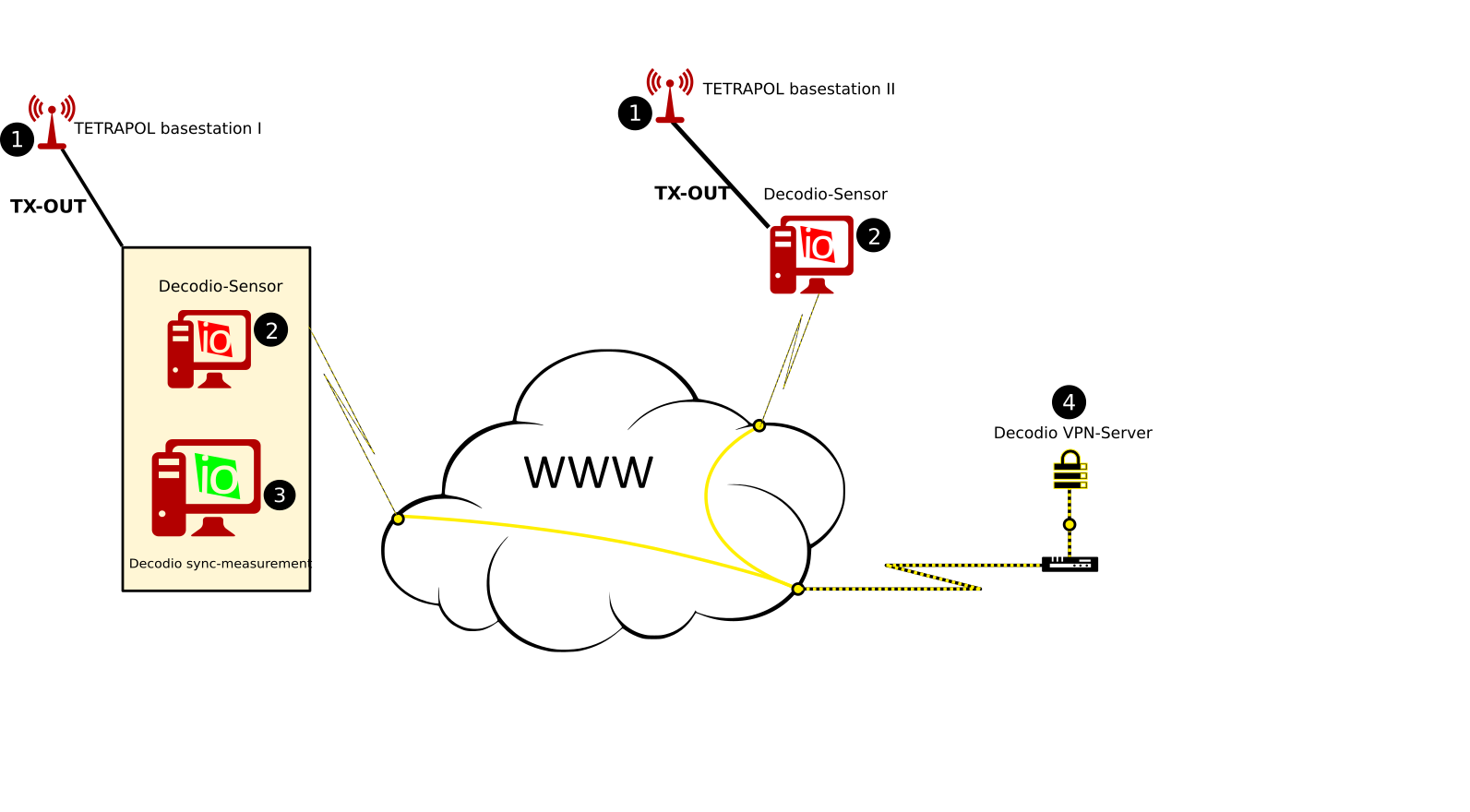DECODIO NET for Tetrapol - Use Cases
Use Cases:
- Monitoring of air interface
- Decoding and visualization of network broadcasts and parameters
- Logging of Tetrapol calls
- Logging of channel-load
- Logging of communication behavior
- Detailed Tetrapol PDU output for troubleshooting
- Tetrapol coverage test with power and MER
- Base station synchrony measurements with Decodio distributed system
1. Monitoring of air interface
Decodio NET for Tetrapol is able to demodulate and visualize the quality of multiple Tetrapol carriers. Co-channel interferences can be detected. Zero-span measurements for time-signal analysis can be performed.
Use cases:
- Detecting co-channel interference
- Measurements in single frequency network
2. Decoding and visualization of network broadcasts and parameters
Decodio provides an overview of all Tetrapol carriers with detailed information of the transmitted parameters.
Use cases:
- Network troubleshooting
- Verification of configuration
- Live-view into network traffic
3. Logging of Tetrapol calls
All calls are listed in a call history table and their metadata is logged.
Use cases:
- Verification of channel/group/coverage assignments
- Logging of call duration for load analysis
- Logging of call metadata for evidence purposes
4. Logging of channel-load
Usage of the control channel can be logged and visualized in DECODIO ORANGE .
Use cases:
- Logging and visualization of control channel load
- Detection of bottlenecks in network configuration
5. Logging of communication behavior
Group, coverage assignment can be logged and readily displayed via DECODIO ORANGE .
Use cases:
- Logging of calls by group / coverage
- Logging of cell-load for optimization
- Visualization of communication behavior
6. Detailed Tetrapol PDU output for troubleshooting
Every transmitted Tetrapol protocol data unit can be logged into an Excel compatible format with timestamp for troubleshooting.
Use cases:
- Protocol testing
- Detailed analysis of network behavior
7. Tetrapol coverage test with power and MER
In combination with DECODIO RUNNER multichannel drive tests can be performed.
Use cases:
- Verification of network coverage
8. Base station synchrony measurements with Decodio distributed system
Decodio’s distributed architecture and GPS-synchronization mechanisms allows to perform tests for transmission synchronization in single frequency networks.
Two interconnected sensors assembled in two SFN-base stations provide a correlation for time and frequency difference measurement.
